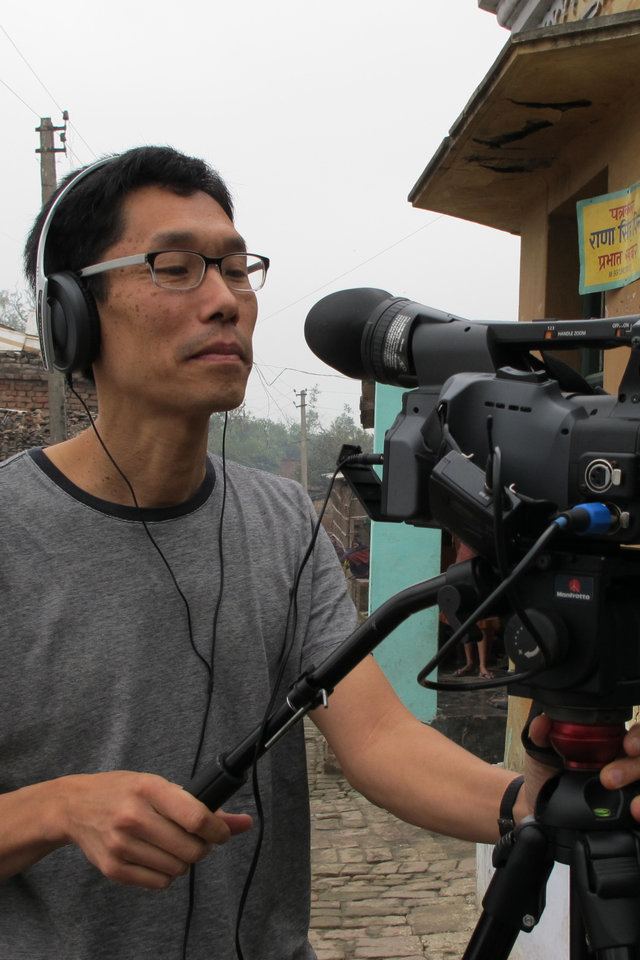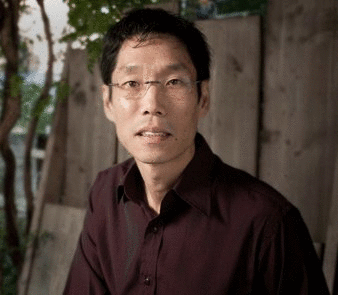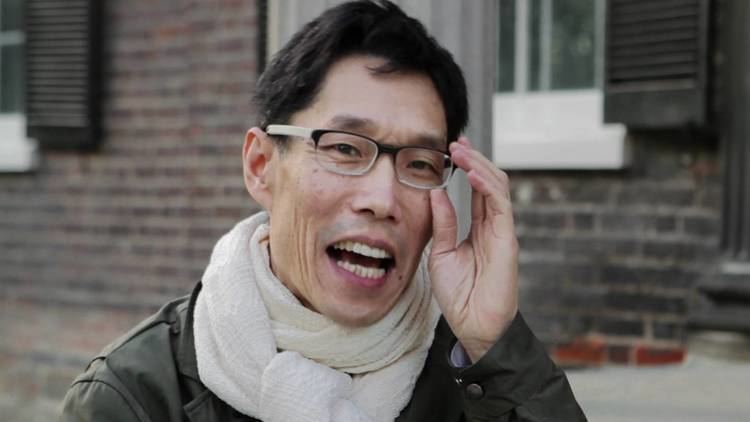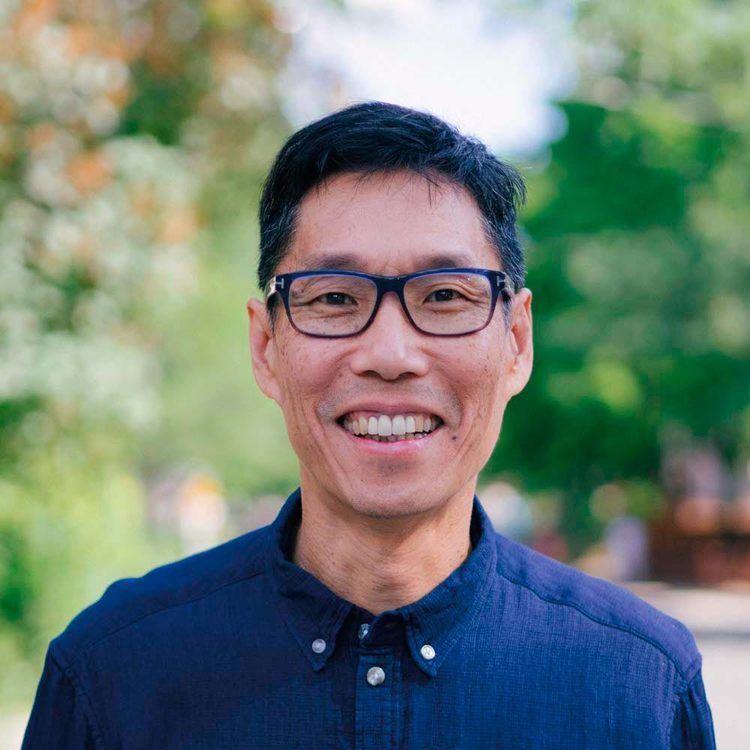Nationality Canadian Role Artist | Name Richard Fung Known for Video art | |
 | ||
Awards Bell Canada Award for Outstanding Achievement in Video Art Movies Dal Puri Diaspora, Sea in the Blood, Rex vs Singh Similar People Ali Kazimi, John Greyson, Jared Raab | ||
Notable work Sea in the Blood, 2000 | ||
Celebration soundbites richard fung
Richard Fung (born 1954) is a video artist, writer, public intellectual and theorist who currently lives and works in Toronto, Ontario. He was born in Port of Spain, Trinidad and is openly gay.
Contents
- Celebration soundbites richard fung
- Katie chats regentpark richard fung filmmaker inspired souls
- Early Life and Family
- Professional career
- AIDS
- Asian Homosexuality
- Homosexual Asian Men and Pornography
- Race Homosexuality and Family
- Selected filmography
- Selected Writings
- Awards
- References

Fung is also an associate professor at OCAD University. He earned his undergraduate degree at the University of Toronto, and received a ME in sociology and cultural studies.

Fung's work in video interrogates the role of Asian men in gay pornography, while underscoring the intersections between colonialism, immigration, racism, homophobia, and AIDS. Many of his works have been presented at international venues within Canada and the United States of America.

Fung is also an activist. He founded the Toronto-based organization Gay Asians of Toronto in 1980.

Katie chats regentpark richard fung filmmaker inspired souls
Early Life and Family
Fung produced a short documentary titled My Mother’s Place (1990), a tribute to his mother Rita. The documentary records Rita’s Chinese-Trinidadian childhood, and the family's immigration to Canada, while focusing on the formation of Fung's complex identity in the process of ‘coming out’ to his family.
Professional career
After studying at the Ontario College of Art and Design, Fung worked as a video animator at Lawrence Heights, a public housing area in Toronto. At his position at Lawrence Heights, Fung simultaneously learned to make video and trained people in the community to produce their own images . These images were later aired on the community television channel. Later on, Fung received his degree in cinema studies and produced his first independent video, Orientations: Lesbian and Gay Asians in 1984. Fung went on to produce several videos that won awards and were screened in numerous venues and archived in various locations such as the London Institute of Contemporary Art, Chicago’s Art Institute, and the Getty Gallery in Los Angeles. In 2003 and to present day, Fung teaches Integrated Media and Art and Social Change at the Ontario College of Art and Design. His other teaching positions include "Chancellor's Visiting Associate Professor at University of California- Irvine, Visiting Assistant Professor at State University of New York- Buffalo and Visiting Scholar at the Mass Communications Research Centre, Jamia Millia Islamia in New Delhi”. Prior to his present day role at the Ontario College of Arts and Design, Fung was the coordinator of the Centre for Media and Culture in Education at the Ontario Institute for Studies in Education at the University of Toronto. As an active member of the art community, Fung has served as a member on the editorial boards of Fuse Magazine and Amerasia Journal. He is a member of the Caribbean Contemporary Arts in Trinidad, Images Festival, the first Racial Equality Committee of the Canada Council, and the Toronto Arts Council. Fung is also a programmer with the Inside Out Lesbian and Gay Film and Video Festival. “A former Rockefeller Fellow at the Centre for Media, Culture and History at New York University, Richard has lectured across North America, Europe, Asia and Australia”. Lastly, Fung has written and published many works mainly on aspects of culture and identity such as his essay ‘Looking For My Penis: The Eroticized Asian in Gay Porn Video’ and his book on culture art in collaboration with Gagnon, ‘Landscapes’.
AIDS
Richard Fung along with video activists Gregg Bordowitz, Jean Carlomusto, Alexandra Juhasz, and James Wentzy, had the goal to thoughtfully look back at the historical changes in AIDS activism and normalization in North America. In one way, Richard Fung’s Sea in the Blood (2000) video essay gave him the chance to show his audience the seriousness of AIDS, by documenting his experience of a close family member and partner that fought with AIDS and thalassemia. Sea in the Blood is a reflection on race, sexuality, and disease. Richard had a personal relationship to thalassemia in his sister Nan, and AIDS partner Tim McGaskel. His video essay revolved around two trips that made an impact in his life. The first trip was when Richard traveled from Trinidad to England with his sister Nan, to meet a famous hematologist that was interested in her disease in 1962. His second trip took place in 1977 when Richard and his partner Tim McGaskell, made a pilgrimage from Europe to Asia. Nan died before Richard and Tim’s returned home. The narrative of Richard’s personal accounts are riddled with love, loss, and AIDS. He aimed to avoid sentimentality and lure the audience to feel as he does- though his video essay. Richard uses blood to symbolize HIV/AIDS and thalassaemia, as thalassalemia is an inherited blood disorder and HIV/AIDS is a viral condition that passes from individual to individual. His work focuses on racism and homophobia that both derive from blood relations by sexual pathologies. He used blood to symbolize race and sexuality challenging medical knowledge, by exposing political economy of communicability. Fung uses his video essays as a platform to create narratives of the seriousness of AIDS and the damage that it can do physically to an individual, and loved ones around them.
Asian Homosexuality
Steam Clean (1990) is a videography by Richard Fung, commissioned by the Gay Men's Health Crisis (GMHC) of New York, and the AIDS Committee of Toronto. This work focuses on the discourse of sexual performance, and the intersectional nature of identity and political practise. Steam Clean is a safe sex tape geared towards Asian men, that show two men having sex in a steam room. Richard aims to encourage the practise of safe sex in the lives of the gay Asian community, by addressing the discourse around queer culture- such as homophobia. The sauna is instructional porn used to create a space that guides viewers into what may feel like a seminar room, for the discussion of safe sex by young community educators. Richard Fung’s use of the sauna as a setting is what some may call ‘homoscape,’ which are streams of cultural material moving back and forth from national boundaries of perceived stabilities. His use of the sauna was aimed not only as a space of sex, but as a “narrative [for] conventions and expectations, [where] the conjugal drive is resolved." His focus was to direct the viewer's focus towards the ‘ethnoscape’ and ‘homoscape’ on the premise of how they overlap in a dynamic way “of rootedness, coalition, and intervention.”
Homosexual Asian Men and Pornography
Through his pieces such as Orientations (1984) and Looking for My Penis (1991), Fung points out how the production of mainstream pornography caters to white viewers. Such constructions reveal a relationship of power in which the White race reigns superiority in the racial hierarchy. Fung expresses his concerns on the subject as he highlights how mainstream gay porn is more available to gay Asian men than any other type of independent work produced and could therefore disproportionately affect the way gay Asian men view their sexuality.In his video Orientations (1984), Asian men are constructed as the sexual subjects as oppose to the sexual objects. By doing so, Fung addresses Asians as in charge of their sexuality and sexual interests. Looking For my Penis (1991) explores the importance of having different representations within mainstream commercial porn. Print pornography is often the first introduction to gay sexuality, especially for gay Asian men who are economically and socially disadvantaged, isolated and without support. Current commercial gay porn caters predominantly and almost exclusively to White viewers. Fung points out how this can construct a mixed message as it paints the gay identity as exclusively White.
Race, Homosexuality, and Family
In many of Fung's works relating to his family, such as Sea in the Blood (2000), Fung explores how lesbians and gay men experience being exiled by kinship. The coming-out process provokes fraught relationships between members of LGBT and their families and the AIDS pandemic contributes to an environment of exclusion and disappointment. Fung's works focuses widely on queers of color, drawing predominantly from personal experiences as an Asian homosexual. In My Mother's Place (1990), Fung touches on the Asian culture and how his relationship with his mother is made up of disclosures of what to reveal and what to hint at, eliminating details while refraining from committing to lies; being both "inside and outside" the frame of kinship. The queer figure of inside/outside evokes “the structures of alienation, splitting, and identification which together produce a self and an other, subject and an object, an unconscious and a conscious, an interiority and an exteriority ... but the figure inside/outside, which encapsulates the structure of language, repression, and subjectivity, also designates the structure of exclusion, oppression, and repudiation.” Queer theorist, José Esteban Muñoz writes about In My Mother's Place in his book, Disidentifications: Queers of Color and the Performance of Politics. According to Muñoz, Fung's performances can be understood as "autoethnography" due to their employment of tactics like "postcolonial mimicry" and "hybridity." In Fung’s video Sea in the Blood (2000), he documents his painful negotiation between having to choose his blood family and his chosen family (relationship with his partner Tim). Most of Fung’s videos touching on his family use a style of predominantly personal narration and an impassive scientific account that illustrates how intimate family histories are shaped by race, ethnicity, and colonialism. His videos pull on subtle imagery, such as the use of waves and the sea (Fung on the beach with Nan as a child and later swimming with his lover Tim). The use of waves and the sea are fluids symbolizing not only the blood as a bearer of illness (Nan’s rare blood disease thalassemia and Tim’s battle with AIDs), but as a site of pleasure, barrier, and his family’s immigration to Canada. In Fung’s essay, “Programming the Public”, he explores the politics of addressing the audience his works. Highlighting how gender-or race-based programming must weigh the “phenomenal pleasure of collectively consuming identity-based programs addressing “you” against the challenge of achieving “mixed” and formally varied programs that construct new horizons of reception and attract new audiences.” Exploring the conflicts between genders, ethnicities, racial differences and divergent communities of tastes, Fung touches on how presentation of film and video and its reception reflect paradoxes of identity, access, and power. Audience reception is then rooted in ones’ status and language, reflecting a hierarchal ladder of differences based on gender, race, and class.
